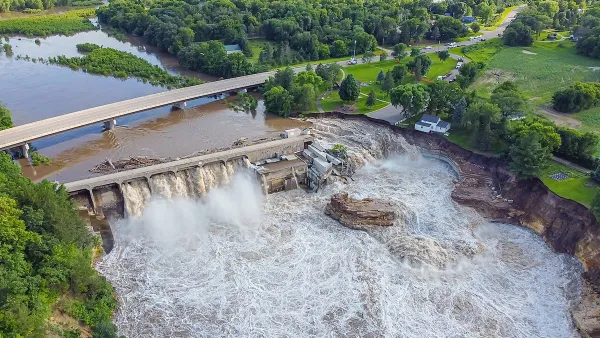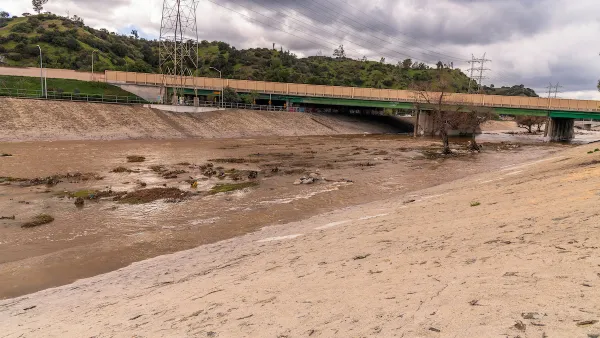Cities and suburbs face billions of dollars in investments and repairs to comply with Clean Water Act standards. The NRDC outlines some of the urban water conservation methods municipalities can take to reduce stress on these infrastructure systems.
Despite decades of under-investing, cities and suburbs are still held responsible for billions of dollars towards maintaining and improving infrastructure in compliance with the Clean Water Act. For many municipalities, it is a balancing game between keeping up with increasing water demand due to growing populations, and maintaining water supply through sewage treatment and stormwater controls. With looming climate change and extreme weather conditions, agencies are faced with an immense challenge.
A new report from the Natural Resources Defense Council advances treatments to lower water demand through various programs and policies, which in turn would "also have the potential to improve efficiency of certain wastewater treatment processes at existing facilities, [and yield] lower operating costs and extended equipment replacement periods."
A few methods are outlined in the report, such as "promoting or mandating the use of water efficient fixtures, appliances, and landscapes, as well as graywater and blackwater reuse systems", as well as "improved metering, volumetric billing, and conservation pricing, for drinking water, wastewater, and stormwater." Another suggestion is to install cisterns and rain barrel through incentives or rebates to capture rainwater and limit discharge of stormwater run off.
The report outlines best practices from different municipalities, and recommends policy changes/ resources cities and suburbs can take advantage of to uphold Clean Water Act regulations.
FULL STORY: Waste Less, Pollute Less: Using Urban Water Conservation to Advance Clean Water Act Compliance

National Parks Layoffs Will Cause Communities to Lose Billions
Thousands of essential park workers were laid off this week, just before the busy spring break season.

Retro-silient?: America’s First “Eco-burb,” The Woodlands Turns 50
A master-planned community north of Houston offers lessons on green infrastructure and resilient design, but falls short of its founder’s lofty affordability and walkability goals.

Delivering for America Plan Will Downgrade Mail Service in at Least 49.5 Percent of Zip Codes
Republican and Democrat lawmakers criticize the plan for its disproportionate negative impact on rural communities.

Test News Post 1
This is a summary

Test News Headline 46
Test for the image on the front page.

Balancing Bombs and Butterflies: How the National Guard Protects a Rare Species
The National Guard at Fort Indiantown Gap uses GIS technology and land management strategies to balance military training with conservation efforts, ensuring the survival of the rare eastern regal fritillary butterfly.
Urban Design for Planners 1: Software Tools
This six-course series explores essential urban design concepts using open source software and equips planners with the tools they need to participate fully in the urban design process.
Planning for Universal Design
Learn the tools for implementing Universal Design in planning regulations.
EMC Planning Group, Inc.
Planetizen
Planetizen
Mpact (formerly Rail~Volution)
Great Falls Development Authority, Inc.
HUDs Office of Policy Development and Research
NYU Wagner Graduate School of Public Service




























